Exposed Ductwork: Design Ideas Which Pack A Punch

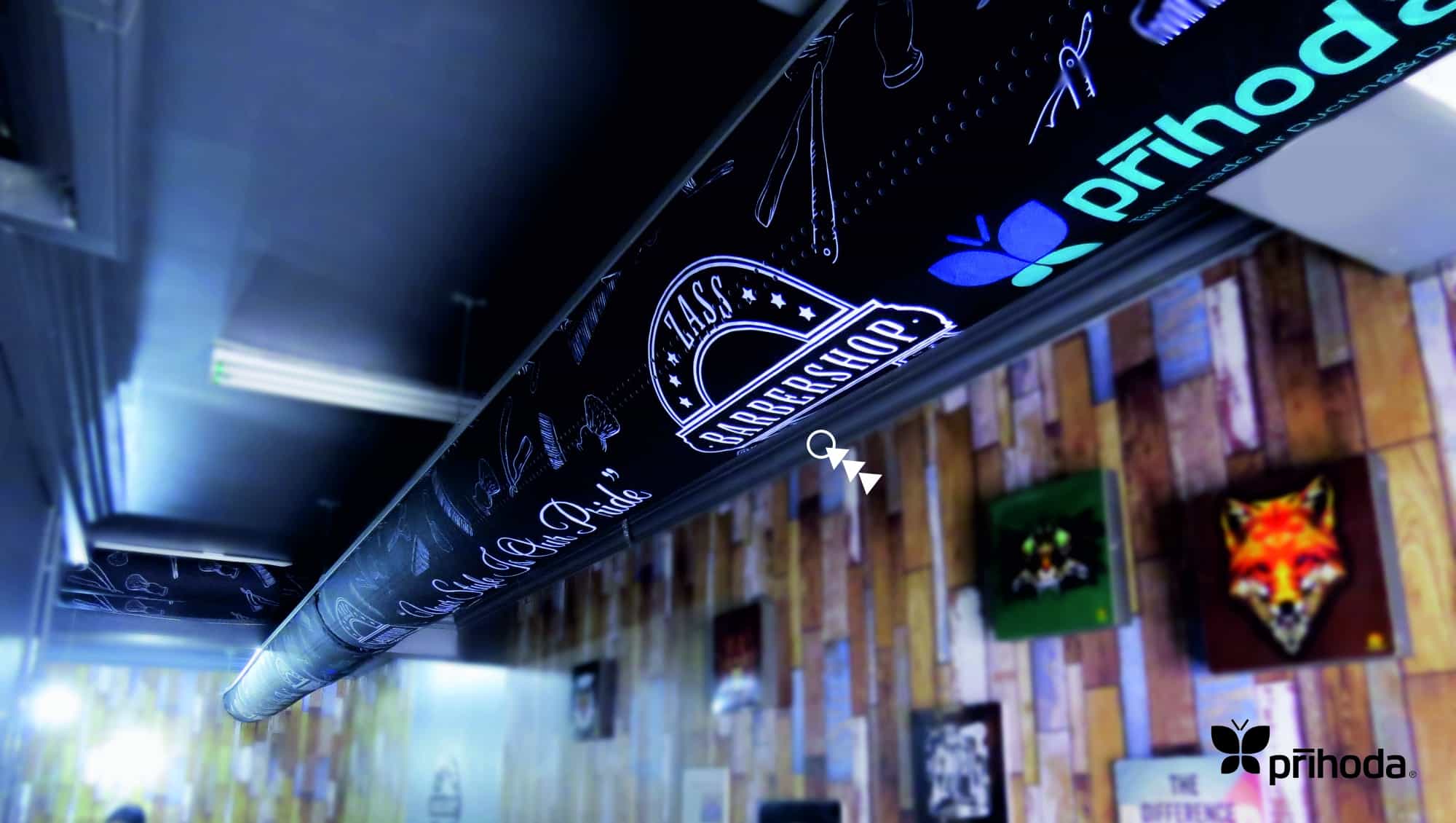
Why aesthetics matter
It’s easy to get bogged down on the practical aspects of building services and forget the people who will ultimately use them. In ventilation design, there is a tendency to try to hide conduits, ducts and grilles or, conversely, accept them as an ugly but necessary evil.
At Prihoda, we believe our fabric ducts can be as aesthetically pleasing as any well-designed architectural feature. Textile ducts are made-to-measure and require no grilles or vents, providing an almost boundless opportunity for layout options. With many colours to choose from, fabric ducts can be made to fade into the background or stand out to make a modern design statement.
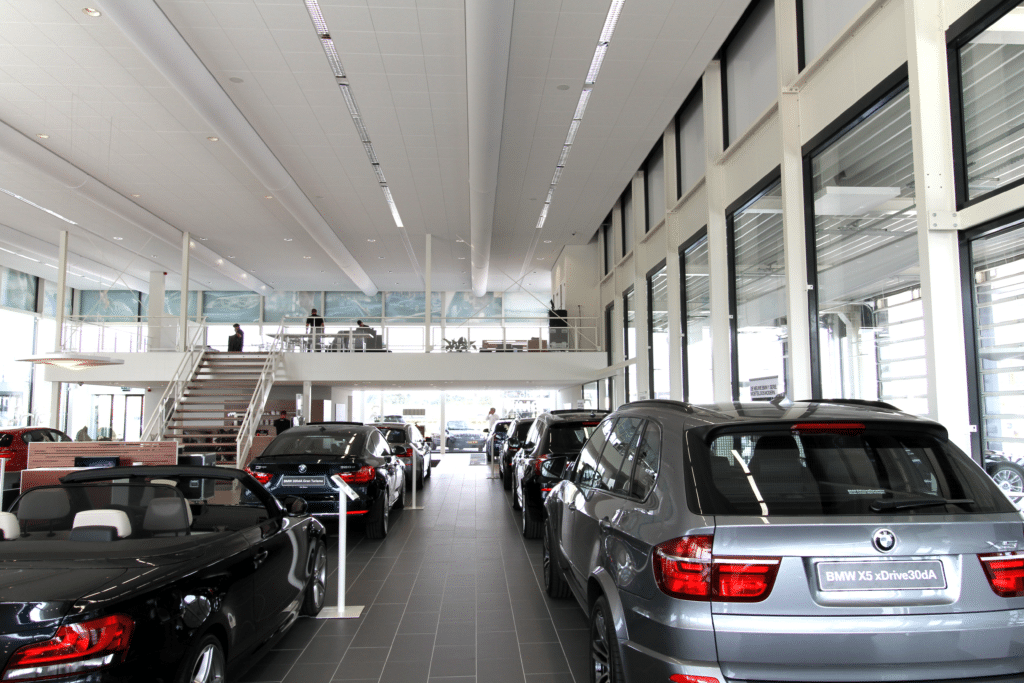
Fabric ducts can be used in many different types of application, from schools to coffee shops. This means that many people can benefit from better-looking fabric ducts, and architects and designers can use them to enhance the use of the space. Ensuring an eye-pleasing ventilation solution goes a long way towards keeping the end-users of the building comfortable and happy.
What to look for
But what makes a fabric duct installation aesthetically pleasing? The same design principles used in interior décor can be applied to fabric ducting.
- Balance: the system must look balanced, whether it is following a symmetrical, asymmetrical or radial scheme within the space. The layout can make or break the design.
- Harmony and rhythm: it must fit in with the existing elements to create a unified look. If the colour of the ducts clashes with their surroundings, the space can become draining or stressful to its occupants – not so good in retail or healthcare.
- Emphasis: by contrast, a splash of colour can prevent a space from becoming boring or too matchy-matchy. A focal point is always needed to keep the décor exciting and appealing.
- Proportion and scale: the relationship between the size of the existing elements of the space should be considered in any new design.
Common pitfalls often arise from not working with the existing features. For example, a smaller space would look odd with an enormous round duct. Splitting it into thinner ducts, and perhaps also changing them to a D-shape, would yield much better results.
Limitations
Naturally, there are practical limitations to take into account. Air supply requirements must always take precedence over aesthetics – we are discussing air delivery, after all. The overall sizing of the textile duct system derives directly from these requirements. Similarly, the location of existing utilities and structural elements can restrict the layout of the fabric ducts.
Layout flexibility
Unlike traditional metal ductwork, our fabric ducts aren’t restricted to standard sizes, lengths and sections. Every duct is bespoke, making it easy to work around architectural and structural elements such as beams and columns, or even curved ceilings.
The shape isn’t limited to round ducting. Where necessary, a slimmer profile can be achieved using a half-round, circular sector or segment cross-section. This is especially useful when there are spatial challenges like low ceilings or narrow corridors. With fabric ducts, there is no need to compromise between a sleek look and excellent ventilation.

Colour options
Because they are made of textile material, fabric ducts are available in practically any colour. The colour selection of the ductwork can help to set the mood of the space. A pop of colour can turn an otherwise drab interior into an energising place that encourages the natural flow of ideas. (Check out our work at Queen Mary University library for an example.) In healthcare and therapeutic settings, calming colours can be used to help occupants wind down and relax. And for retail and commercial buildings, duct colour can be matched to logos to strengthen the impact of company brands.
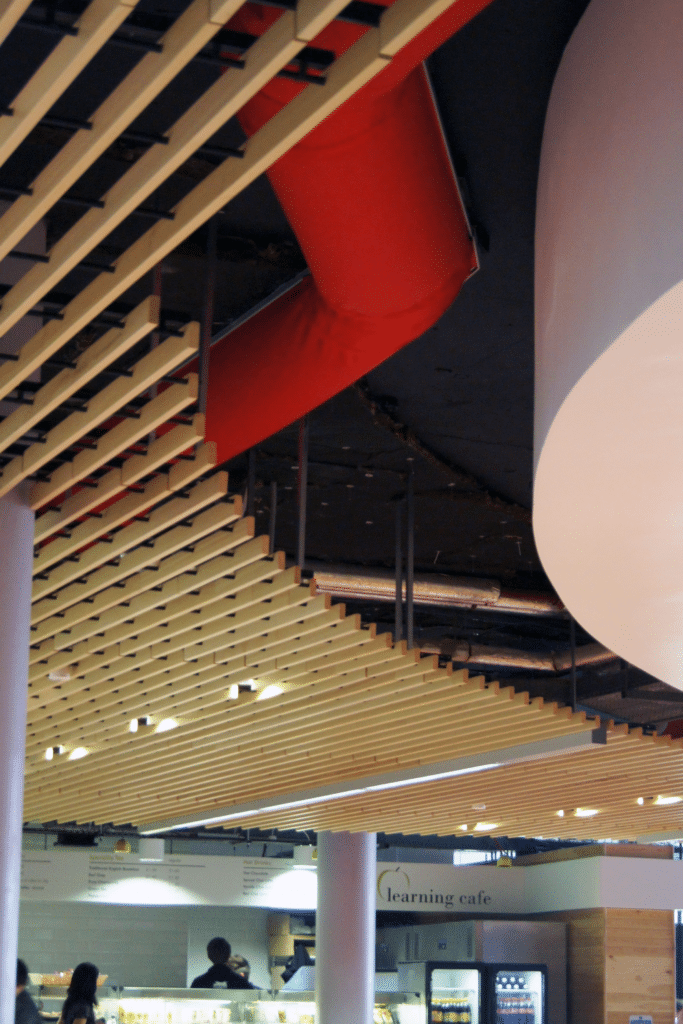

Prihoda Art
One of the most exciting features of Prihoda fabric ducts is the ability to print designs directly on the fabric. Custom colours let you choose the perfect shade for the intended space – great for matching with company colours. Printed logos, slogans and company graphics on the fabric ducts allow prominent but professional branding. Decorative patterns and motifs can be printed on the ducts to create a unique style.
Your imagination is the limit.
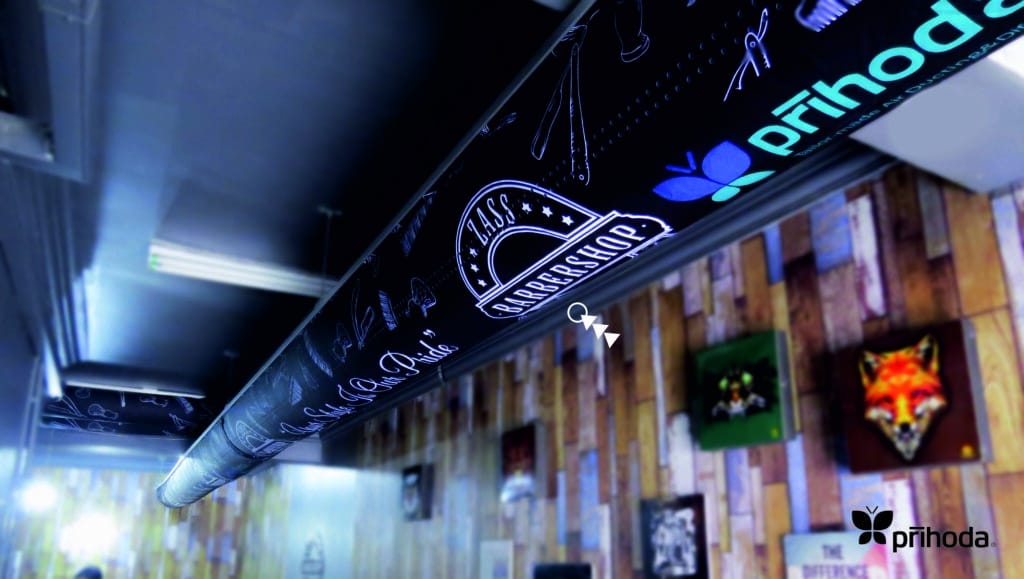
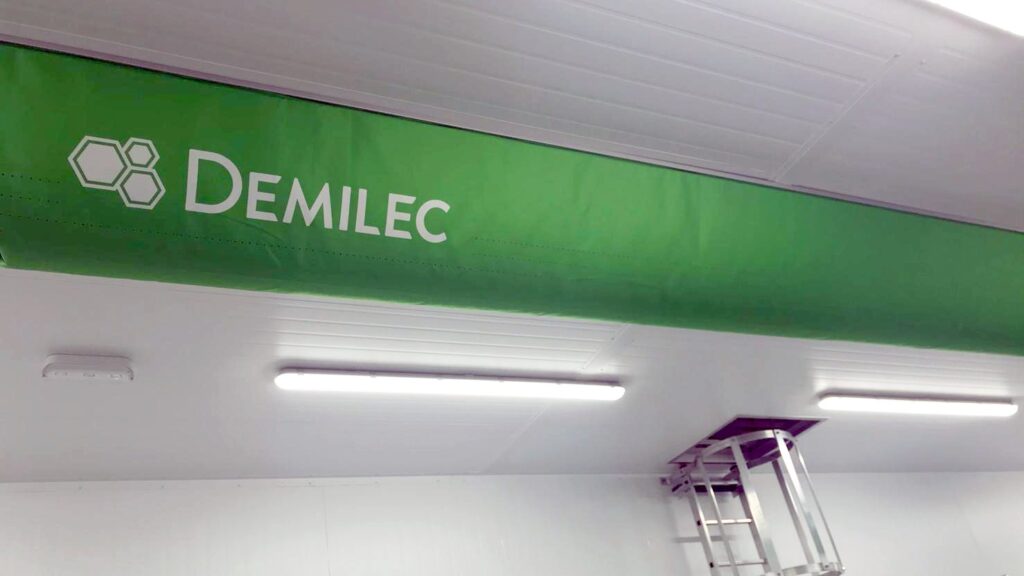
Conclusion
There is no need to hide ventilation ducting and utilities. An aesthetic HVAC design can be achieved with exposed ductwork by following time-tested design principles. Fabric ducting makes it easy to design an aesthetic result, whether the intent is to create a tastefully modern look or a soothing and restful environment. And always without sacrificing the draught-free low-velocity ventilation achieved by our fabric ducts.
Talk to us to discuss your ideas for your next project, or if you’d like to know more.
Looking for more information?
Our experts are on hand to answer any questions. Why not give us a call or drop us a message, We’ll work with you to find the right solution.
Contact us

